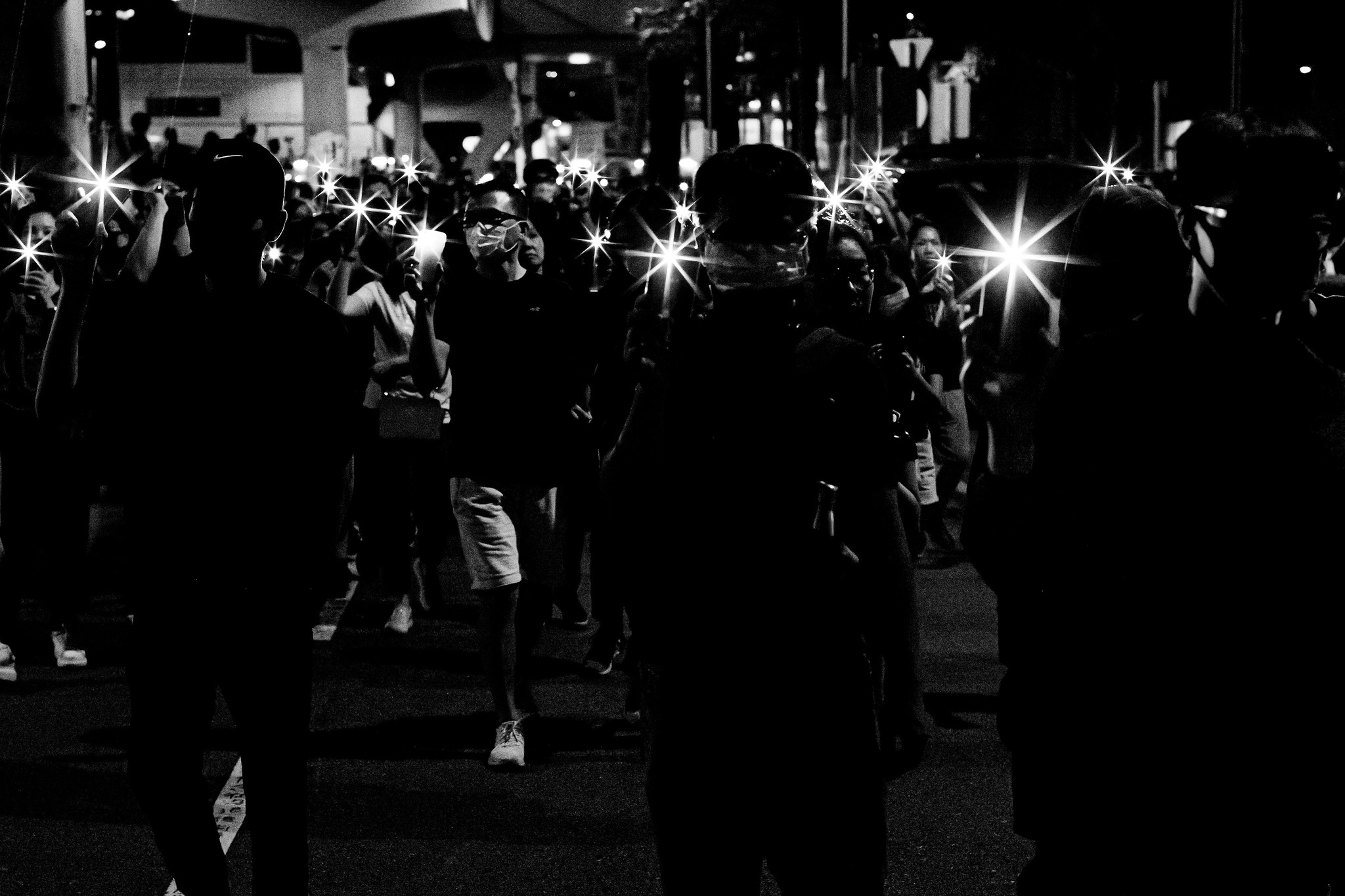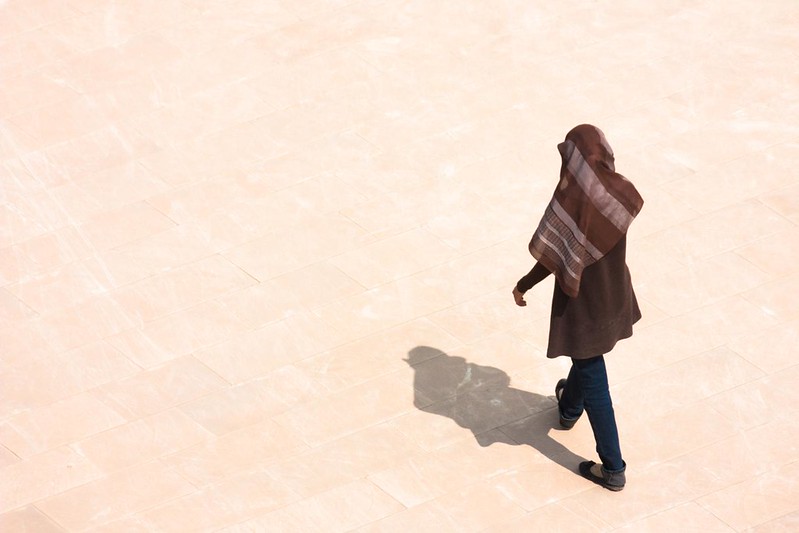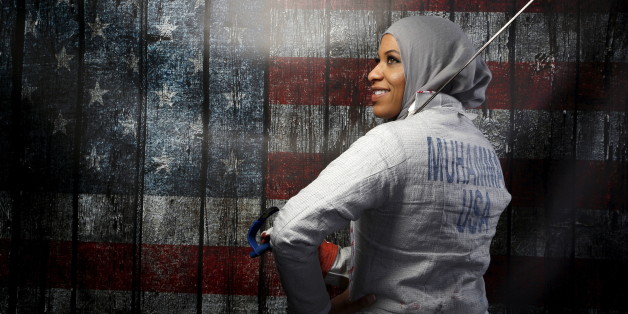I find myself rummaging through a suitcase in the guest bedroom of a quaint brick row home in Blackburn, England. My husband and I are visiting his relatives en route from New Jersey to Rome. I whip out a tank top and dash off to the bathroom. The reflection staring back at me is dressed for Rome and not for my husband’s ultra-conservative (albeit, lovely) burka and thobe-clad extended family. Had he only mentioned this little tidbit about our hosts, I wouldn’t find myself scrambling to adjust my wardrobe by slipping on my tank top backwards beneath my blouse. This subtle act of conformity does the trick though, raising both my neckline and my comfort level.
Most of us recognize the power of social conformity, but what we may not be as cognizant of is the extent to which our behavior is guided by the real or imagined influence of others (to see a stark example of this phenomenon, watch this old Candid Camera segment, of a famous elevator experiment in which subjects turn to face the rear of a windowless elevator only because everyone else in the elevator is doing so). If we examine this concept as it relates to the way we dress, or more specifically, the degree to which we cover our bodies (which I will refer to as the degree of dress from this point forward), it quickly becomes obvious that many of us follow an unspoken set of socially and contextually determined codes. Unless principles of modesty and propriety inform our degree of dress, then group trends tend to guide the degree to which we cover our bodies. We each have a fixed level of modesty, but its expression, when not informed by religious or other codes of modesty, fluctuates based on culture, place, time, and context. That is to say, we each maintain our own individual level of modesty even if the degree of dress is starkly different from one setting to the next.
For example, let’s say I rank six on the modesty scale of one to ten and my dress choice is not informed by principles of modesty. The result will loosely be as follows: when visiting Pakistan, I would not only wear looser clothing but I would even find myself covering my head in certain market places in order to restore the level of modesty with which I am comfortable. I would, in fact, “feel naked” if I were to slip on just a pair jeans and a t-shirt. Granted, you can spot women dressed in sleeveless tops and fitted capris in the cosmopolitan cities, but in that societal context for me to maintain my level of modesty (six out of ten), I would need to cover myself a bit more. In Philadelphia, to preserve that same level of modesty, jeans and a t-shirt would be perfectly acceptable.
As fashion trends change, so do comfort levels with the degree of dress. In 2004, I would have felt mortified to step out in a pair of calf- and thigh-outlining skinnies and a top that sits just below my hips, but a few years later when the look became ubiquitous, I, like many, became desensitized and now often sport this look.
Individuals are not the only ones who adjust their degree of dress based on cultural cues. Companies do the same. In an influential fashion tome of the 1960’s, “The Importance of Wearing Clothes,” the author, Lawrence Langner, compares poster advertisements of showgirls in France, England and the United States to illustrate the cultural and temporal relativity of modesty. To draw the optimal level of arousal in promoting the shows, the marketing company behind the advertisements tailored the posters to each country. The showgirls bared their breasts in the French posters, wore small pasties covering their nipples in the English posters, and in the American posters the showgirls wore halter tops covering their torsos. Langner explains the varying depictions of eroticism in media as a function of what part of the world the show is exhibited in and the intended audience. The varying degree of undress across cultures, from bare breasts in France to halter tops in America, were cultural equivalents.
Langner also examines the temporal relativity of modesty; people tend to dress, and even behave, less reservedly in the evening than during the day. Recently, I saw a television infomercial for Cami-Secret, a triangular clip-on piece of cloth for women who “love that low-cut top for going out at night but showing that much cleavage during the day just doesn’t seem right”.
Since one’s degree of dress can fluctuate based on time, place and culture, situational modesty is an oft-held conversation amongst mainstream faith groups that prescribe modesty but lack a universal dress code. Several examples can be found on Catholic online forums where discussions range from the exposure of a women’s knee at work, to skirted bathing suit bottoms at the beach, to exposed shoulders at mass. This in-depth exploration of situational modesty, or “situation ethics” as it is called in the Catholic community, appears to go deeper than it does in Muslim communities. Perhaps this is because of the more explicit prescription in mainstream Islam of precisely how one should dress; so explicit, in fact, that the words for modesty and the vehicle of its expression coalesce into one, hijab.
Aside from the confusion that arises when faiths lack a clearly delineated modest dress code for their adherents, we find that modern social media further exacerbates misunderstandings when it comes to modest dress. Our personal level of modesty is often miscommunicated to friends or family when they catch snapshots of our sometimes fleeting self-expressions in particular contexts circulating on social media. We lose, to a degree, the situational and temporal context in which the photo was taken, as well as our original audience. With the advent of this new social technology, I find myself developing a sensitivity for young adults like the 2010 Miss USA, Rima Fakih and the sexting suicide victim Jesse Logan, who at a transient age of self-exploration are in a time when society is in a cultural flux as it has been catapulted into a new strata of human social interaction. Without their choosing or understanding, moments of their relatively private expressions have been captured, encapsulated, and over-exposed to large unintended audiences.
As we grapple with this new era of human interaction some of us may be taking into account how our degree of dress changes with time, place, and context and we may be re-calibrating our filters and “privacy features” accordingly. On the other hand, some may look to a universal, fixed expression of modesty. Perhaps, with the encapsulating and public nature of social media, those enslaved to fashion or those simply following cultural mores might take a step back and reflect on why we dress the way we do and how maybe we should.
(Photo Credit: Huzzah Vintage)
Shazia Riaz is Events & Publicity Editor for AltMuslimah.

















